Over the past few months during lockdown, we’ve relied on digital and online communication, and people have been on their phones more than ever! So now is a good time to check up on your online marketing.
Emerging from Lockdown
While being stuck at home over the last few months, people will have inevitably been looking around at the interior jobs they’ve yet to start (or finish) and dreaming about their next projects. There’s no doubt they’ll be looking around the web for inspiration.
We are now emerging from the crisis in many parts of Europe, with measures being relaxed by varying degrees, but many consumers are continuing to restrict their movements to help prevent the spread of Covid-19.
This might be the ideal time to focus on the ways in which you can improve your online marketing presence – whether than be an improved website, blogs to draw in customers, or raising your social media game to make even the greatest Instagram influencers proud.
However, we know online marketing is not something that is familiar to everyone. That’s why we’ve brought together retailers, marketing and PR experts to make it as easy as possible for you to plan and implement an online marketing strategy that will attract new customers during this time – and futher into the future.
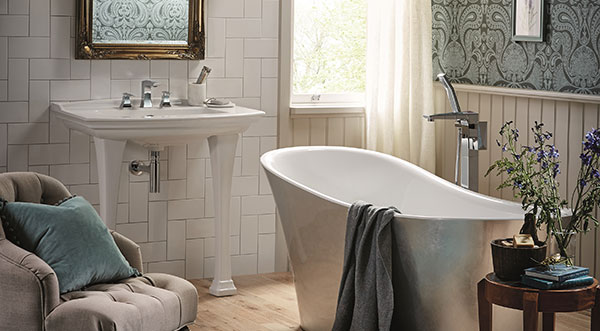
Virtual Shopfront
First to consider is your website – this is your virtual shopfront and should be treated with the same care and attention as your physical store front, and even more so if you’re located out of town and away from passing foot traffic.
You probably already have a website but there are some ways you can improve and optimise it to maximise its impact and effectiveness.
1. Searchability and SEO
Search engine optimisation (SEO) is crucial if you want to appear at the top of Google searches. To optimise your site for search engines you must know what search terms or keywords your customers are most likely to be using, and then you must include these keywords throughout your web copy in an organic way so that your copy flows nicely, is readable, and to the point. Ensure your content is regularly updated to keep your site looking fresh.
Digital marketing teacher and trainer, Andrew Davis, comments: “Keep your web copy keyword-focused but short, snappy and readable. It’s got to be written for search engines but also for your audience.”
You want visitors to your site to keep reading and there is one unwritten rule for good web copywriting – try and avoid commas. Stick to short sentences broken up by full stops and try and limit paragraphs to two or three sentences.
“Search engine optimisation is really about two main factors – what happens on your site, and what happens off your site – so on your site you’re making sure you have keywords, with those keywords linking to other pages on your site. You can also use services like SEM Rush or Neil Patel’s Uber Suggest and these will give you what is called ‘a domain score’ – so you just type in your domain name [website address] and it gives you a score between one and 100 – most small businesses should be scoring around 20 and if you’ve been operational online for a long time then the score should be at 30 or 40. You want to make sure you’ve got links on other sites that link back to yours – this will also help improve your score.”
Another tip is to keep it local. Being found for generic search terms, such as ‘Kitchen shop’ is going to be hard and sometimes not always helpful. A search for ‘Kitchen shop Oxford’ will be easier to be found and also bring more relevant customers to your website.
Key Takeaways
- Use keywords for SEO
- Keep copy short and snappy
- Limit paragraphs to three sentences and avoid commas
- Check your domain score
- Keep keywords relevant and local
2. User Journey
One of the quickest and easiest things you can do and improve is to look at the user journey through your site – check every page, make sure all the links work, make sure your site is optimised for Google – so this involves understanding the headings and sub headings, making sure each page is focused on a key word or key phrase.
“You should have rich content – plenty of images with ‘alt tags’ attached to them so that when you hover over the images they’re labelled [which is also a way of adding keywords], and videos,” Andrew Davis says. “If you can add videos and link these to other pages on the site, these will help too. These are fast and straightforward things retailers can do – just tweaking.”
Get Google Analytics as this is a really important free tool to have access to. It gives you key insight into how people are using your website, how many visitors you’re getting and what the most popular pages are.
It also gives you an insight into their journey through your site such as dwell time (how long they stop in a particular place), bounce rate – (this describes when visitors come to your site via a Google search but then quickly leave – a higher bounce rate can bring your Google ranking down). If you have a high dwell time then this will push you up the rankings.
Victoria Ruffy is the founder of international fashion, technology and interiors PR agency Little Red Rooster. The company represents Italian appliance brand Smeg and luxury bathroom brand Victoria + Albert among many others. She adds: “If a customer sees a product or service advertised in a glossy interiors magazine, the first place they are going to look is online. It is generally given that consumers, on average see a product / service six times before purchasing – particularly when it comes to investment pieces such as a new bathroom suite or kitchen appliance.
“The likelihood is they will pick up a mobile device there and then, have a quick Google, and return to it repeatedly – perhaps showing their partner, bathroom designer and so forth. This is why a strong online presence is so important – if a brand or product has the backing of a leading magazine such as Elle Decoration or a trusted influencer like @2LGstudio, but its website falls flat and doesn’t quite sell the dream they’d envisioned, a potential customer is going to switch off immediately.”
Key Takeaways
- Check all links
- Add images and videos
- Make sure these have ‘alt tags’
- Get Google Analytics
- Make sure your website sells the dream
3. The Importance of a Blog
A blog is a great way of engaging with your audience and drawing visitors to your website. Using a blog you can really showcase your expertise in interiors and design while promoting your favourite brands and showing off recently-completed jobs.
The theme of your blog posts should of course focus mainly on your area of expertise but they needn’t be limited exclusively to this. More general seasonal posts focusing on fun things to do in your local area or promoting a local event or food festival, can be a great way of reaching out and engaging with people who aren’t necessarily in the market for a kitchen and bathroom currently, but who might be in the future.
A blog post should be at least 500 words or up to 2000 words. You should have plenty of images – especially for longer blogs and plugins that allow readers to easily click and share to Twitter or Facebook.
Key Takeaways
- Showcase your knowledge and expertise
- Shout about completed jobs
- General posts bring people to your site who wouldn’t otherwise visit
4. Interactivity
As well as having rich, varied and regularly updated content, it’s worth considering something that visitors to your website can interact with, such as an online planning tool like Design@Web. Such a tool is likely to keep visitors on your site for longer (increasing the dwell time and your Google rankings) and allows them to share their ideas with you at the very earliest browsing stage in their research journey, giving you the opportunity to hook them early. Unlike a blog, an online planning tool also takes no time investment from you but still gives people a reason to visit your website. And it gives you access to the valuable data of those who submit their initial ideas.
Key Takeaways
- Allows you to engage right from the start
- Easy way of keeping visitors on the site
- Little investment required for potentially significant return
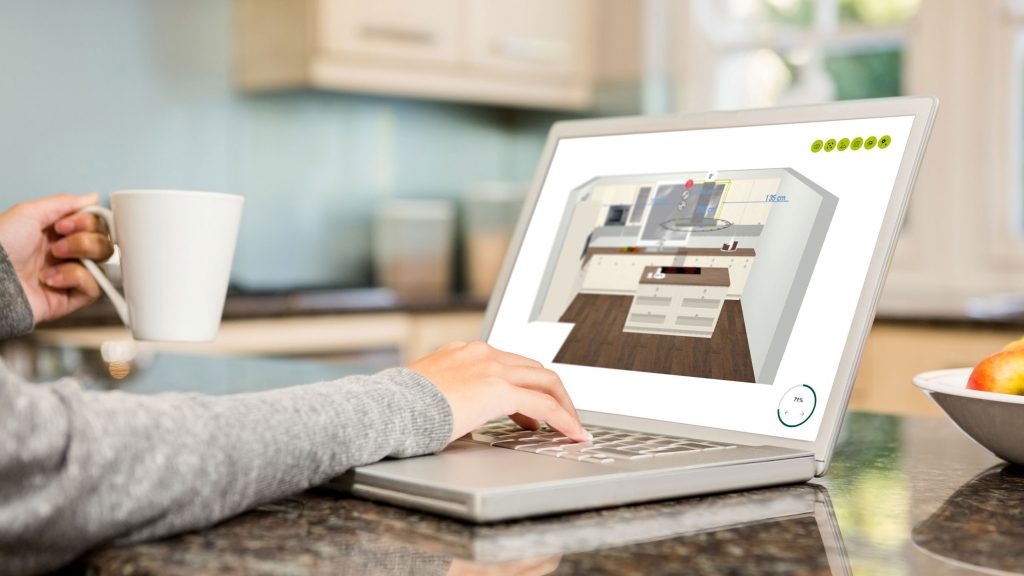
5. Looking to Create a New Site?
One of the easiest and most comprehensive platforms on which to build a professional site is WordPress. It is “pretty much the industry standard” according to Davis and it’s really straightforward to use, with lots of themes and templates. WordPress also has lots of ‘plugins’ you can use such as Yoast SEO to help you automatically optimise your site and Google Analytics so you can monitor your site’s effectiveness.
It also has plenty of plugins which make linking to your social media platforms extremely easy.
Key Takeaways
- WordPress is easy to use
- Plenty of plugins to create new functionality
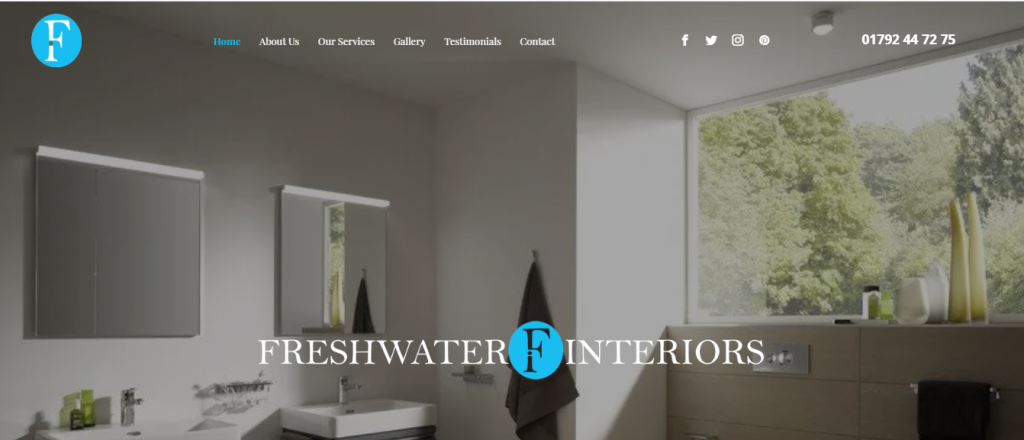
Getting the Message Right
While reviewing and updating your online presence, it might be worth looking at the central messaging of your branding to ensure it reflects who you are and stands you out from the competition.
Ms Ruffy comments: “When it comes to marketing and building a brand online, you have to find what makes you different. There are so many bathroom brands out there, for example, which have the same look and feel. What makes yours special? Why should a customer invest in you? You have to create a point of difference that makes potential clients or customers want to work with you. Community is also essential – where are yours? Online, of course! Social media marketing allows a direct-to-consumer route which, especially in this new world order is essential. Don’t just put social in a box as ‘someone else’s job’. You need to get your head around it – whether that’s by hiring in-house or hiring an agency. No company can afford to not have a social media strategy.”
6. Going Social
So it is said time and time again, but it is true. The power of social media really should not be underestimated! Facebook and Instagram in particular are so important for reaching out to your customers and prospects in a fun and friendly, and more direct way than is possible with your website. There are many other platforms – Twitter, LinkedIn, Pinterest and Houzz, but Facebook and Instagram are arguably the best for customer interactions so we’ll focus on these.
Facebook is great for interacting with your existing customer base and reaching out to potential customers in your local area. It is an ideal platform for showcasing completed jobs and it’s one of the best platforms for your customers to leave comments and reviews because it’s likely that many of your customers will already have a profile there. You can also engage easily with current customers via Messenger and they can come to you if they have any problems. This promotes a greater level of trust in your brand.
Many independent retailers gain most of their business via word-of-mouth and recommendation and Facebook is a platform that makes recommendation easy. All a previous customer has to do is tag in a friend on your page or on one of your posts and a link has potentially been made. All you need to do is look out for mentions or tags, then you can reach out to these warm leads.
You can generate new business and leads by uploading interesting and engaging videos. These could perhaps include events you’ve held or interiors shows you’ve attended, as well as running competitions where you encourage followers to “like” and “follow” your page. You could even ask your followers to copy and paste your content and reshare with their own followers. It’s all about extending your reach.
And then of course you can pay for adverts, but you don’t have to spend money to make Facebook work well for you – you just need to think a bit creatively.
Kutchenhaus in Wilmslow is a retailer who takes their online and social media presence seriously. On using this platform director Karl Donovan comments: “Facebook has been the most effective so far for us as we do a daily boost and target key catchment areas as well as keywords.
“It has a community feel to it. We don’t just run ads about our products and services, we also run competitions through the year at key seasonal times. As you’re not restricted in the length of your videos we can also showcase our before and after videos of customer projects.
“Although it’s a relatively easy platform to engage with, you will still need to plan and have a proper strategy in place so you know what you’re going to post and when and how you’re going to engage. Mr Donovan says: “I work with an independent specialist and we try and plan three months in advance for what our content and messages are going to be about. We also do tactical things in the month dependent on what’s happening.”
Key Takeaways
- Engage directly with customers and leads
- Great place for customers to leave reviews
- Promotes greater trust in your brand
- Extend your reach
- Make sure you plan and have a strategy
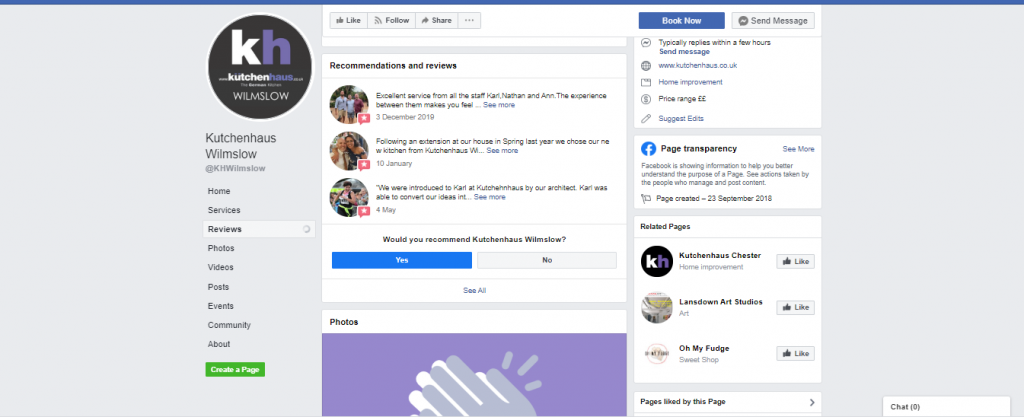
Instagram is a great and really easy way of extending your reach further than your local Facebook network, as the employment of hashtags on your posts will ensure they’re seen by anyone searching those terms. Try and include specific and niche tags alongside more general ones to ensure you don’t get drowned out in the noise. For example, the hashtag #interiors has more than 20 million hits and #bathroomdesign has more than 2 million, whereas #greentilesbathroom has fewer than 100.
Think about what is trending and relevant for your post and tailor your tags to suit. This way you’re more likely to be seen by someone who is actually after what you’re offering.
Your pictures are obviously the key element though. Ensure you use the best of what you have and don’t flood your feed with too many posts. Your Instagram page should be carefully curated and your posts should be carefully considered with informative copy alongside.
Swansea-based kitchen and bathroom retailer Freshwater Interiors (@Freshwater_interiors) demonstrates perfectly how Instagram should be utilised for maximum engagement. They post once every few days, and have regular themes which differ depending on the day. “Transformation Tuesday” focuses on recent jobs and features before and after shots along with a full description of how they achieved the project, while “Monday Mood boarding” showcases a selection of mood boards they’ve had from clients. Each post promotes an element of the company’s expertise.
Instagram is another way of directly communicating with your customers and prospects and it’s crucial that you do engage with those who leave comments or post questions. If you ignore them they’re highly unlikely to engage again.
Bethan Lloyd Morgan, design director for Freshwater Interiors recommends that retailers who are new to social media start with Instagram, “as it’s a great visual tool.”
She adds – “It does take work – it’s time consuming to come up with new and fresh content regularly but it’s definitely worth it as it’s a great way of extending our reach, building confidence among our potential and existing customers because they can see what you do and because it gives them another place to communicate with you. It’s also much easier to update your content on Instagram than on your website so you can ensure you always have new stuff for people to look at.”
Key Takeaways
- Use specific hashtags
- Make your posts informative
- Ensure your posts promote your strengths
- Engage with your audience
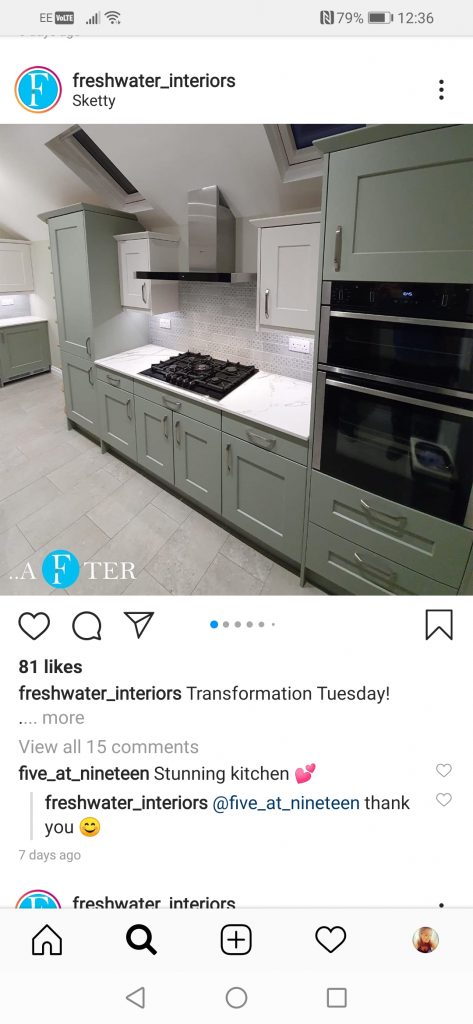
Conclusion
So getting your online marketing presence into tip-top shape is no mean feat, but as we’ve demonstrated here, there are quite a few straightforward things you can implement with little investment.
In the medium to longer term, it might be worth considering whether you could benefit from hiring a marketing manager who can look after your website and social media channels – if you don’t have one already. A post-Covid19 world might look different to the one we were used to, with online retailing and engagement playing an even more significant part than it does already.
Ms Ruffy adds: “Just look at what happened in the first few weeks of lockdown – our shopping habits completely transformed in a number of weeks. The option to shop online has always been there, but it hasn’t been a necessity until now.
“With showrooms closed social media is, at present, the only way for brands to communicate with their customers. We don’t know how long this will go on for, so just think about the potential sales you could be losing by not having social media as a touchpoint? Also, if you don’t have time then consider outsourcing – many people do. Once you see the benefits of strong social media management you won’t look back. Even, if you outsource temporarily I say give it a go. You really can’t afford not to.”
